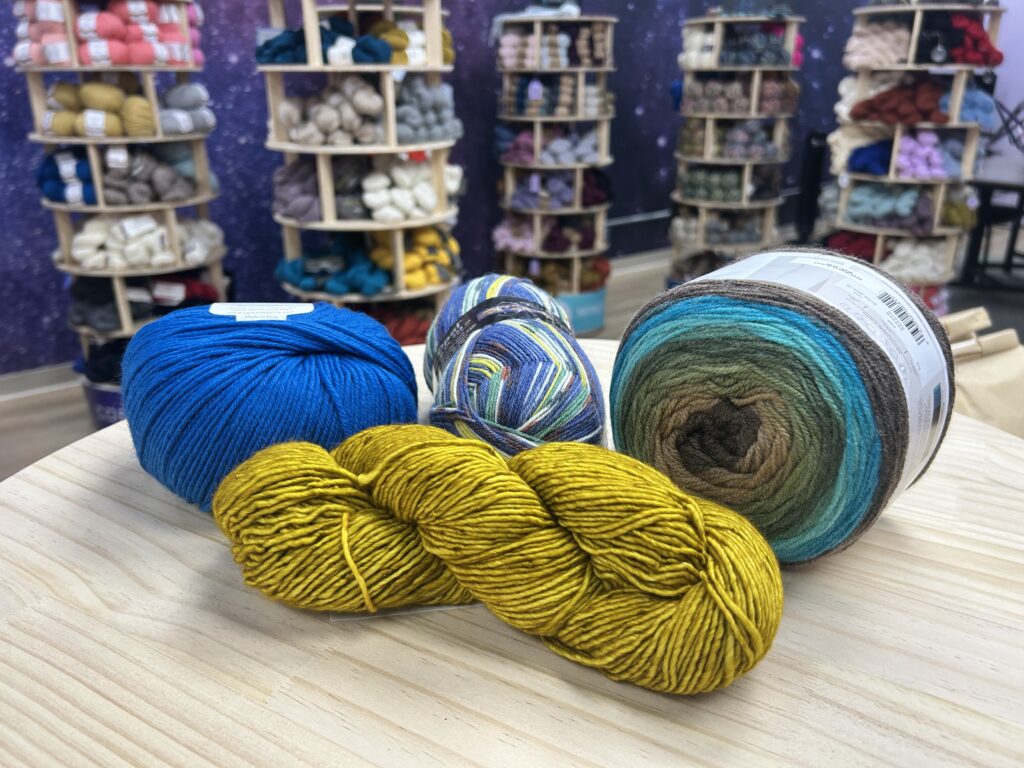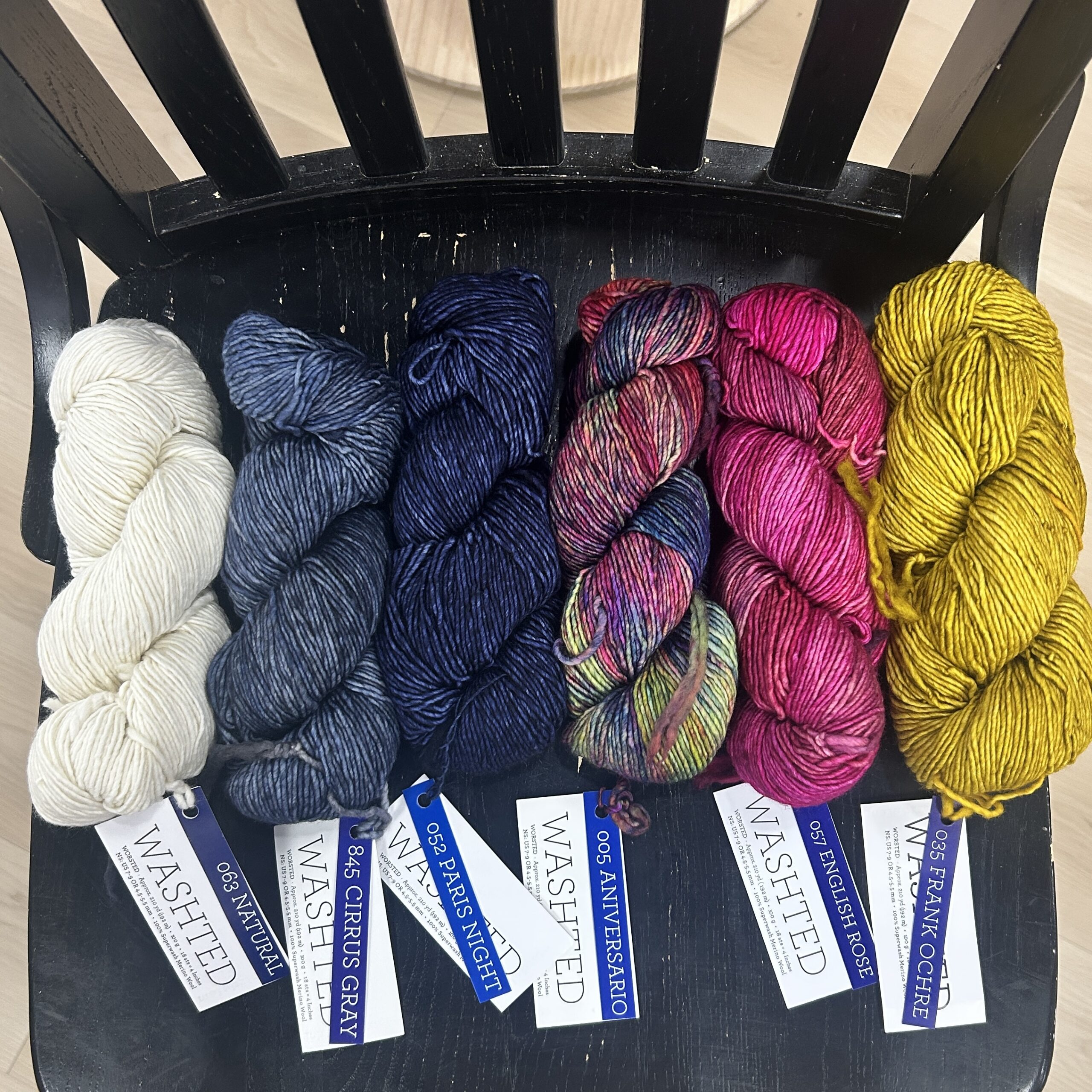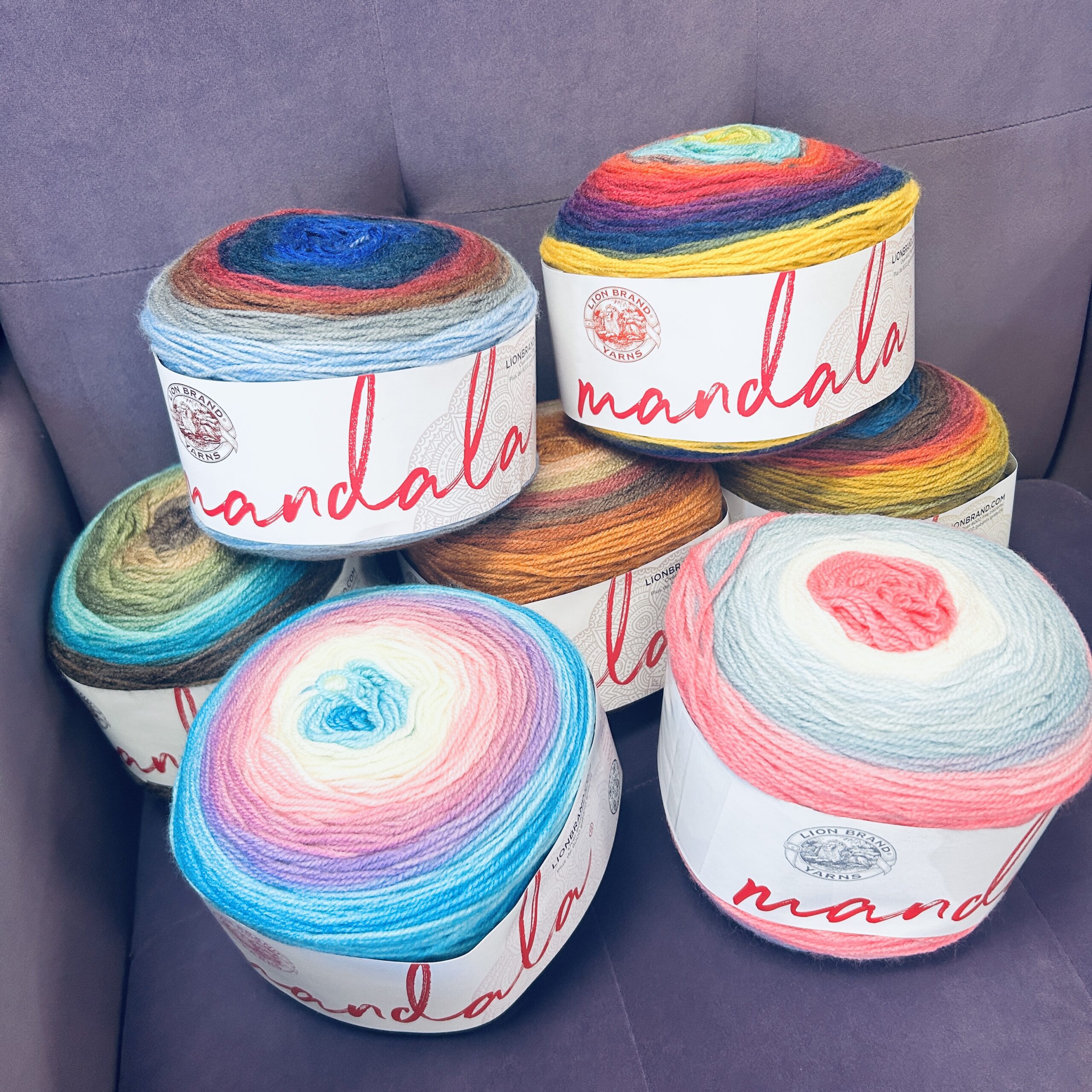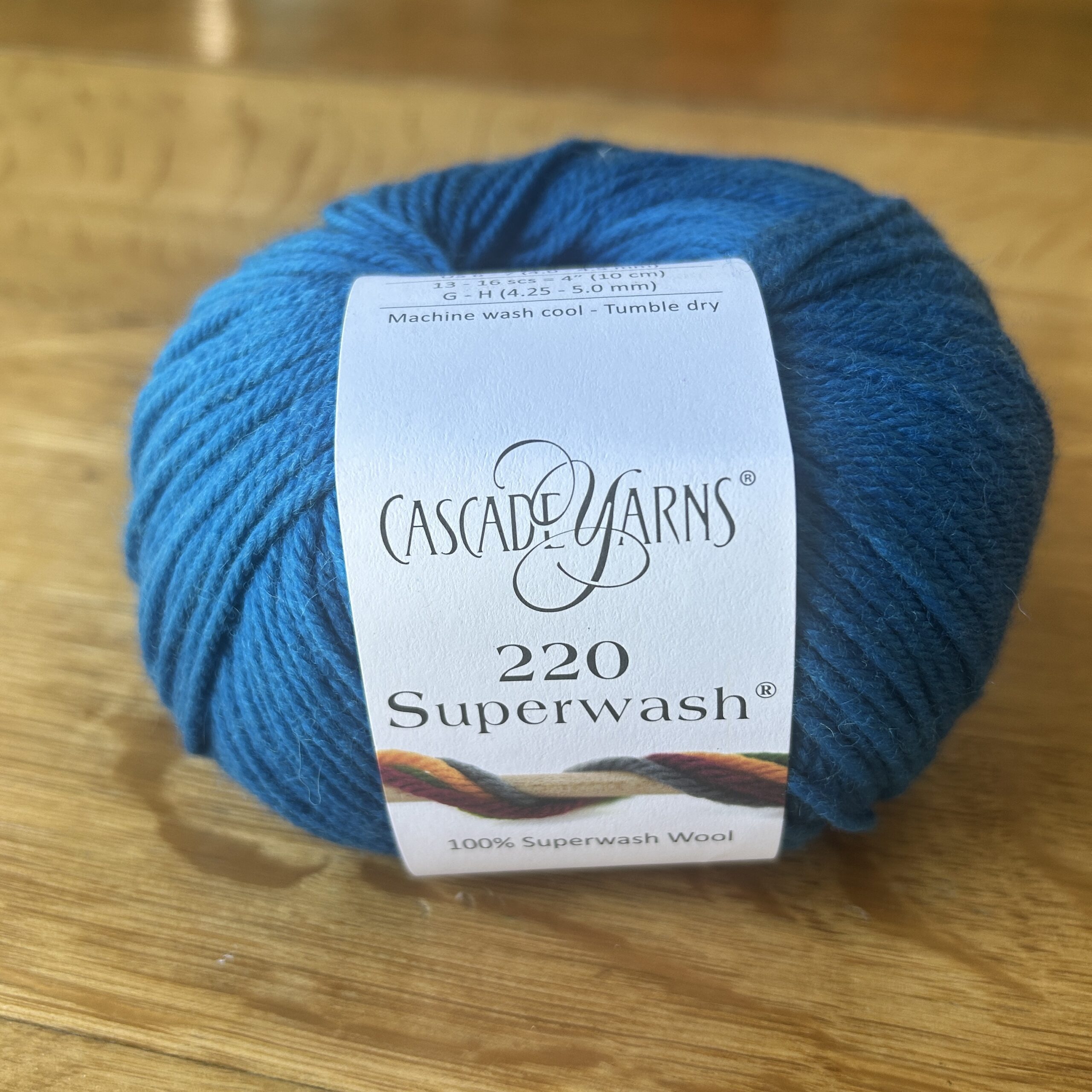
Walk into any yarn shop, and you’ll see fiber in all sorts of shapes — elegant twisted hanks, neat skeins, squishy cakes, and tidy donuts. While they all serve the same basic purpose (to get yarn into your hands), each format has its own history, logic, and quirks.

A hank is a large loop of yarn twisted into a neat coil.
History & Reasoning: This form dates back centuries and was the easiest way for spinners and mills to store yarn without stretching it. Before modern ball winders, hand-wound hanks could be untwisted, draped over a swift, and wound into a ball as needed.
Today’s Benefits:
Pro Tip: Never knit or crochet directly from a hank! Always wind it into a cake or ball first to avoid tangles. Need a swift or a winder? We got you!

A skein is yarn that’s wound into an oblong cylinder, ready to use right away.
Industrial Advantage: Skeins are wound by machine under controlled tension and shrink-wrapped or banded with a label — great for mass production and easy retail display.
Why You See Them Often: Affordable to produce, familiar to big-box store shoppers, and no extra tools needed to start your project.

A cake is a flat-topped, center-pull ball of yarn — most often created when you wind a hank on a ball winder.
Benefits:
Fun Fact: The “cake” shape is purely a result of the mechanics of a ball winder — no historical origins, just a modern convenience.

The donut is a wound ring of yarn with a hollow center.
Why They Exist:
Long before yarn labels told you how many yards you were getting, spinners and weavers relied on “hank” as a unit of measurement. In Europe, especially in Britain during the pre-industrial era, textile guilds and cottage weavers needed a consistent way to price and trade yarn.

A hank wasn’t just a pretty twisted skein — it was a legal measure of length. The exact yardage varied by fiber type and regional tradition, but for fine wool, one hank often equaled 560 yards, divided into smaller “skeins” or “knots.” Cotton and linen hanks had different standards, sometimes based on the intended fabric width.
Because yarn was produced entirely by hand, winding into large loops was the easiest way to count length — each loop on a reel or niddy-noddy was a known distance. By counting a set number of loops, a spinner could create a full hank without rulers or modern yard counters. Once measured, the hank could be twisted into a compact coil for storage and trade.
Even after mechanized spinning arrived in the 18th and 19th centuries, the hank shape remained a convenient way to store and sell certain yarns, especially luxury fibers. Hand-dyers also continued using hanks because they could be easily untwisted for immersion in a dye bath — a practice that still defines the hand-dyed market today.
###
Next time you’re in The Yarny Way, take a moment to explore the different shapes yarn comes in. From the history-rich hank to the modern convenience of a cake, each form has its own story — and we love helping you find the one that’s perfect for your next project.
Share This:
Subscribe to receive updates and your exclusive coupon by email, text, or both—your choice!
You’ll get your 10% off code right away and can unsubscribe from either at any time.
Your 10% off coupon is on its way to your inbox. Check your spam or promotions folder if you don’t see it soon.